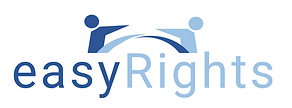Aims & Ambition
easyRights tackles two major challenges to successful immigrant integration. (1) Physical - simplifying the complexities of international, national and local norms that differentiate its mechanisms across the countries; and (2) Social - we aim to change the diffuse, albeit wrong, feeling that immigrants have about themselves as ‘illegal citizens’ that acts as impediment to the full exercise of their acknowledged and endorsed rights.
We will achieve this aim through 5 main objectives below:
1. IMPROVE LANGUAGE SKILLS
Improving language skills will be done by expanding the web based CALST platform, which was originally developed at NTNU, which is focused on tailored pronunciation training (listening, speaking and writing). The CALST platform is currently available for British English and Norwegian dialects. The remaining languages needed for the pilots (i.e. Greek, Italian and Spanish) will be added during the project. In combination with CALST, the NTNU spinoff company Capeesh also a member in the consortium, has added a specific focus and features on personalized vocabulary learning.
2. ENHANCE COMMUNICATION
Enhancing the effectiveness of communication and thus, the immigrants’ understanding of their fundamental rights, irrespective of legal status, will be supported on the easyRights platform by a multilingual Natural Language Understanding (NLU) system. This module aims to overcome the communication problems proffered by most complex government led welcome portals through the implementation of state of the art AI and machine reading capabilities.
3. MAKE INFO ACCESSIBLE TO ALL
Integration of Amazon’s Alexa Skills Kit (ASK), enables the creation of personalized service experiences via the exploitation of voice recognition and Natural Language Processing tools.

4. ENSURE A SHARED UNDERSTANDING
To pave the way for co-creation on the platform (e.g. through hackathons), easyRights will deliver both a Mediation Grammar module, and a semantic model representing the classes of migrants withcontext data and a Recommender System which is a personalization and contextualization service based on collaborative, content based filtering and user’s path dependency. The combination of these tools will create a fertile knowledge base for co-creation to deliver cross-border applications and tools.
5. CONNECT SYSTEMS
Both the Mediation Grammar and the Recommender System will be “fed” by a preliminary activity of mapping, disintegration and reconstruction of the key administrative rules and procedures that facilitate immigrants’ access to welfare services and enable them to exercise their civil rights, while adopting the point of view (and the language) of prospective beneficiaries. This activity will be facilitated by the NLU system deployed and tested in the four pilots, which will be the early users of the system itself.
